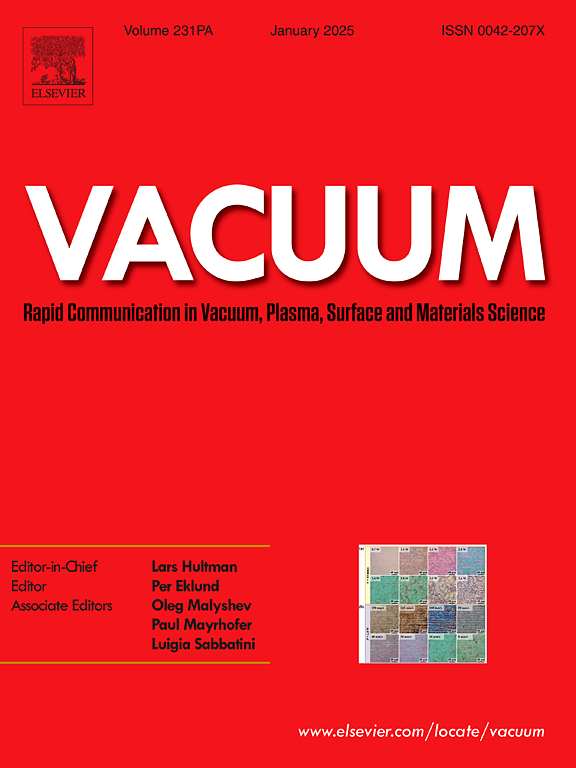Laser processing of lunar regolith simulants for beneficiation and metal extraction
IF 3.9
2区 材料科学
Q2 MATERIALS SCIENCE, MULTIDISCIPLINARY
引用次数: 0
Abstract
In-situ resource utilization (ISRU) is a key aspect to establish a sustainable station on the Moon. Nevertheless, the extraction of metals from lunar regolith is lacking research often shadowed by the extraction of oxygen. In this study, laser ablation as a method for beneficiation with the potential for direct thermal reduction of regolith for metal extraction is introduced and demonstrated. Sintered samples of simulants EAC-1A, FJS-1, and JSC-2A are irradiated by a continuous-wave fiber laser with an intensity of 76 MW m-2 at an output power of 1.5 kW in an Ar atmosphere at 1 bar. The emission spectrum shows the presence of atomic K and Na, hence proving successful thermal reduction and metal extraction. Furthermore, an SEM/EDX analysis of the collection plate to which the extracted species adhered proves the extraction of P, K, Fe, Na, Si, and O. During laser ablation, the surface temperature was measured and a maximum of 2823 K was identified. The surface temperature is in accordance with the boiling points of the oxides P2O5, K2O, Na2O, and SiO2, suggesting the selective extraction of oxides from regolith according to their boiling points. Hence a multi-stage laser process for selective oxide extraction and beneficiation is suggested.
用于选矿和金属提取的月球风化模拟物的激光加工
就地资源利用(ISRU)是在月球上建立可持续空间站的一个关键方面。然而,从月球风化层中提取金属缺乏研究,常常被氧气的提取所掩盖。在本研究中,介绍并论证了激光烧蚀作为一种具有直接热还原风化层用于金属提取潜力的选矿方法。模拟物EAC-1A、FJS-1和JSC-2A的烧结样品在1bar的氩气环境中,用强度为76 MW m-2、输出功率为1.5 kW的连续波光纤激光器照射。发射光谱显示原子K和Na的存在,从而证明了成功的热还原和金属萃取。此外,对萃取物粘附的收集板进行了SEM/EDX分析,证实了P、K、Fe、Na、Si和o的萃取。在激光烧蚀过程中,测量了表面温度,鉴定出最高温度为2823 K。表面温度与氧化物P2O5、K2O、Na2O和SiO2的沸点一致,表明氧化物可根据沸点从风化层中选择性提取。在此基础上,提出了一种多级激光选择性氧化提取和选矿工艺。
本文章由计算机程序翻译,如有差异,请以英文原文为准。
求助全文
约1分钟内获得全文
求助全文
来源期刊

Vacuum
工程技术-材料科学:综合
CiteScore
6.80
自引率
17.50%
发文量
0
审稿时长
34 days
期刊介绍:
Vacuum is an international rapid publications journal with a focus on short communication. All papers are peer-reviewed, with the review process for short communication geared towards very fast turnaround times. The journal also published full research papers, thematic issues and selected papers from leading conferences.
A report in Vacuum should represent a major advance in an area that involves a controlled environment at pressures of one atmosphere or below.
The scope of the journal includes:
1. Vacuum; original developments in vacuum pumping and instrumentation, vacuum measurement, vacuum gas dynamics, gas-surface interactions, surface treatment for UHV applications and low outgassing, vacuum melting, sintering, and vacuum metrology. Technology and solutions for large-scale facilities (e.g., particle accelerators and fusion devices). New instrumentation ( e.g., detectors and electron microscopes).
2. Plasma science; advances in PVD, CVD, plasma-assisted CVD, ion sources, deposition processes and analysis.
3. Surface science; surface engineering, surface chemistry, surface analysis, crystal growth, ion-surface interactions and etching, nanometer-scale processing, surface modification.
4. Materials science; novel functional or structural materials. Metals, ceramics, and polymers. Experiments, simulations, and modelling for understanding structure-property relationships. Thin films and coatings. Nanostructures and ion implantation.
 求助内容:
求助内容: 应助结果提醒方式:
应助结果提醒方式:


